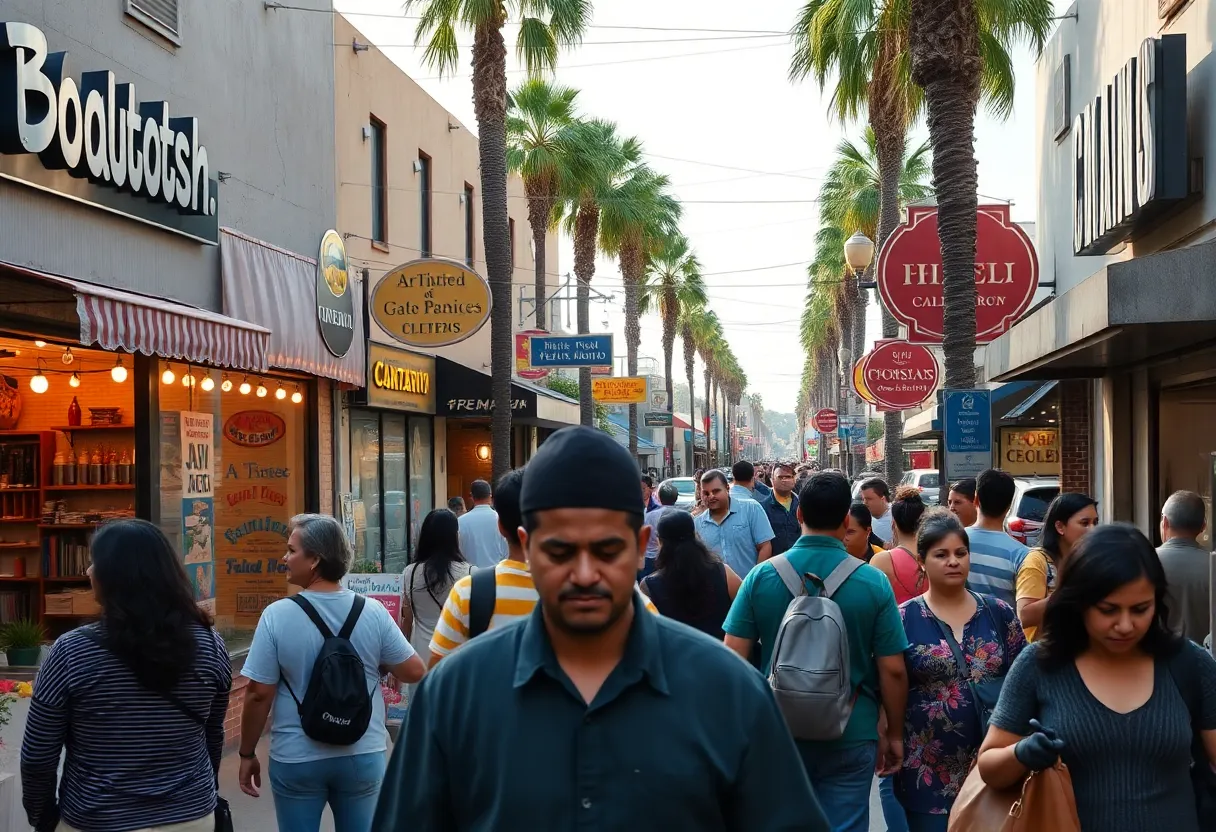News Summary
A recent study by the Bay Area Council reveals that the economic impact of ICE raids in California could reach $275 billion. The study highlights the crucial role that undocumented immigrants play in key sectors like agriculture and construction, where they represent a significant portion of the workforce. As ICE operations increase under the Trump administration, communities report declines in commerce and fear for their safety. Local officials are calling for further research on these effects, indicating potential long-term consequences similar to those experienced during the COVID-19 pandemic.
Impact of ICE Raids on California’s Economy Estimated to Reach $275 Billion
A recent study released by the Bay Area Council outlines the profound economic consequences of ICE raids on California, estimating potential losses of up to $275 billion in the state’s GDP. The study, which was published on June 18, 2025, comes amid increasing fears surrounding immigration enforcement, particularly during a time when the Trump administration has ramped up arrests of undocumented immigrants.
Undocumented immigrants make up approximately 8% of the total workforce in California, and their arrests can reverberate across multiple sectors, most notably agriculture and construction. Research Director at the Bay Area Council Economic Institute conducted this investigation in response to the campaign promises of mass deportations announced six months prior.
Key Industries at Risk
Undocumented labor is particularly vital in California, contributing significantly to essential industries. In agriculture, these workers account for 33% of farm laborers, while in construction, they make up 26% of the workforce. The study reveals that the economic influence of undocumented residents is substantial, with their contributions leading to over $23 billion generated in tax revenue.
However, California’s construction industry is currently grappling with a workforce shortage, facing challenges exacerbated by low unemployment rates and an aging labor pool. Recent estimates indicate a looming shortfall of 500,000 workers in this sector. Consequently, the tightening of labor supply due to ICE raids only intensifies the existing workforce challenges.
Expanding Presence of ICE Raids
The Trump administration’s directive for ICE to conduct 3,000 arrests per day has sparked renewed fears among communities, making raids commonplace at various locations, including local businesses, hotels, and farms. The escalation of these operations has also raised concerns about the timing of arrests, particularly during immigration court hearings.
As these raids become more frequent, many immigrant communities have reported significant declines in foot traffic and commerce. Areas like MacArthur Park and the Garment District, which rely heavily on immigrant patronage, have witnessed drastic drops in customer activity, forcing some businesses to close their doors permanently. In Southern California, local residents are experiencing a ripple effect of fear and uncertainty about their safety.
Local Responses and Consequences
The economic impact extends beyond small businesses, as smaller establishments owned by undocumented immigrants contribute substantially to California’s economy, with 11% of small businesses being immigrant-owned. The decreased activity has direct implications on local economies and community life.
Local officials are becoming increasingly worried about the long-term effects of ICE enforcement actions on these communities. City and county leaders are advocating for studies to better understand the economic implications of the raids, with some comparing the situation to the COVID-19 pandemic, noting the similar echoes of empty streets and diminished activity.
Additionally, a heightened presence of National Guard troops in urban areas of Los Angeles has raised alarms, leading to protests against immigration enforcement tactics. Residents in cities such as Pico Rivera and Santa Ana are voicing their concerns and calling for increased protections for immigrant families.
Daily Life Disrupted
Across the landscape, many immigrants report altering their daily routines and work hours due to the threat posed by ICE raids. The pervasive fear has led to a significant reduction in commerce across immigrant-dense neighborhoods, impacting food vendors, local markets, and small businesses in the region.
Community initiatives are emerging in response to this crisis, with interfaith groups coming together to organize prayer walks aimed at supporting families facing uncertainty. As the fear of ICE raids looms, the social and economic fabric of California’s immigrant communities hangs in the balance, underscoring the critical need for advocacy and protection. The ongoing situation indicates that the repercussions of such immigration enforcement may resonate for years to come.
Deeper Dive: News & Info About This Topic
Construction CA Resources
New Study Highlights Economic Impact of Mass Deportation in California
Mass Deportations May Cost California $275 Billion
Additional Resources
- Los Angeles Times: Immigration Raids Continue
- Newsweek: California Migrants Paid Not to Work Amid ICE Raids
- ABC7: Los Angeles Produce Market Sits Empty Amid ICE Raids
- KTLA: Latino Workers and Customers Vanishing Amid ICE Raids
- The Guardian: Los Angeles Curfew Lifted
- Wikipedia: Immigration in the United States
- Google Search: ICE Raids California
- Google Scholar: Impact of ICE Raids
- Encyclopedia Britannica: Immigration
- Google News: ICE Raids California
Author: Construction CA News
The CALIFORNIA STAFF WRITER represents the experienced team at constructioncanews.com, your go-to source for actionable local news and information in California and beyond. Specializing in "news you can use," we cover essential topics like product reviews for personal and business needs, local business directories, politics, real estate trends, neighborhood insights, and state news affecting the area—with deep expertise drawn from years of dedicated reporting and strong community input, including local press releases and business updates. We deliver top reporting on high-value events such as the Rose Parade, Coachella, Comic-Con, and the California State Fair. Our coverage extends to key organizations like the California Building Industry Association and Associated General Contractors of California, plus leading businesses in technology and entertainment that power the local economy such as Apple and Alphabet. As part of the broader network, including constructionnynews.com, constructiontxnews.com, and constructionflnews.com, we provide comprehensive, credible insights into the dynamic landscape across multiple states.




